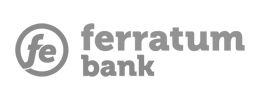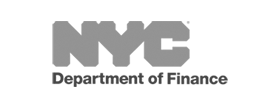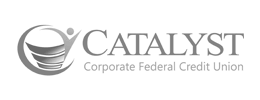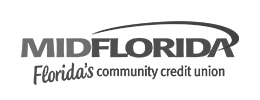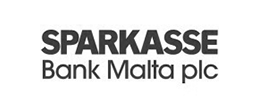Account reconciliation explained: the five-minutes guide
Account reconciliation deals with verification and double-checking of account balances. Accountants have done it for ages and predominantly manually. It is essential for validation of financial statement inputs.
The importance of financial reconciliations done right has been growing due the exponential rise of transaction data volume and complexity. In addition, regulatory compliance pressure for best practice financial reporting and control has been growing. Accounting departments must reconsider how they handle their financial close and revise their accounting software toolkits.
As digital transformation sweeps accounting departments, account reconciliation processes spearheads finance automation projects. Account reconciliation at period-end is a key control activity and particularly suitable for automation with its repetitive, logically consistent flow.
What is data matching in general and why is it important for businesses?
Data reconciliation is a side-by-side comparison of two independent data sources to determine whether they are identical. A well-defined logic of comparison reveals the relationships between the corresponding line items, if such exist. If they do not, exceptions hint inaccuracies or mismatches that probably need some attention and corrective action.
In other words, a successful match should result from objective, pre-defined criteria applied evenly across the entire data set to prevent arbitrary conclusions. The presence of a unique identifier guarantees the greatest amount of certainty. However, in the absence of it, a combination of several relevant criteria justifies a successful match. Otherwise, in the simple job of sorting fruits by type, one can end up pairing an apple with an orange just because they are both round-shaped.
What is account reconciliation in finance & accounting
Numeric and specifically financial data reconciliation is the most prevalent use case of data matching. Accounting reconciliation ensures that account movements are recorded accurately and the period-end balance they form checks. Every business need to match its internal records to corresponding external sources and verify them independently. Reconciliations put financial reporting on a sound data footing.
Traditionally, reconciliation of accounts takes place at the end of accounting period. There are numerous scenarios where company accounts aggregate a certain type of business transactions and undergo a review for consistency with counterparty records. Common reconciliation examples are comparing:
• Transactions in the credit card statement to employee expense approval records
• Incoming bank deposit corresponding to an open invoice from a customer and the CRM record
• Bank payments completed versus the utility bills
• The conformity between security holdings and cash streams in investment accounts
Reconciliation of account balances & transaction matching
Reconciliations apply two methods for verification of accounting data. Rather, two focuses and levels of detail:
Matching at account balance level
Clearly, reconciliations of low risk accounts often examine the balances only, skipping detailed analysis of the transactions forming it. This is an economical approach which saves time and streamlines period end tasks for the sake of meeting the deadlines.
As part of the automation features, reconciliation tools like ReconArt can auto-certify certain accounts. Users can specify the auto-certification rule – for example, no movement for the period, zero end balance, etc. That can save time for individual review by a human operator and become a huge benefit for companies with extensive charts of accounts and multi-level approval workflows.
Matching at transaction level
Evidently, matching millions of transactions manually is impossible. However, for some high-volume, high-priority accounts, it is inevitable or gaps can become too wide to ignore. Write-offs at period-end due to difficulties to catch up on customer receivables, for example, is a real calamity for a growing business. Easily preventable, too.
In that respect, software automaton enables drill down into account details and targeted investigation of discrepancies. We have a number of successful ReconArt implementations that have dramatically improved the efficiency of revenue collection, account controls and overall visibility through the combination of transaction level and balance level reconciliation.
Types of reconciliation processes
Bank reconciliation
Admittedly, bank reconciliation is the most prevalent reconciliation process. It is common for all types of businesses and is quite familiar in personal finances, too. The bank statement provided by your bank lists all account movements and the current balance at the end of a defined period. Confirmed incoming and outgoing bank payments are compared to internal records – ERP, GL – to determine any discrepancies. Ongoing control over bank account deposits and payouts supports robust cash flow management.
Credit card reconciliation
Credit card reconciliation does not apply to merchant payments only, although the e-commerce & retail use case is the first to be recognized. The process also applies to payables and receivables that are facilitated by third party card issuer or payment processor. The mediation of global payment system, payment gateway service and the access to multiple payment methods allows flexibility for both sellers and buyers to participate and exchange on virtually borderless markets.
In summary, credit card statement reconciliation (or, similarly, POS / merchant statement reconciliation) compares the records of a payment facilitator against two additional independent sources: a) internal record of a completed transaction from an order management system, expense management or ecommerce platform, and b) a bank source that accepts the cash.
The abundance of payment methods today is mind-bending, but regardless of the platforms and technologies used, payment reconciliations share similar traits. Despite some variations, the roles in general are distributed between the merchant’s acquirer, the cardholder’s issuer, and the payment processor’s settlement institution.
Credit card reconciliation stands out with this peculiar triangulation where 2+ sources must match in pairs and all together. Usually, the so-called 3-way matching is performed in two consecutive steps. Consequently, reconcilers take more time to investigate and follow up on mismatches. That innate complexity makes credit card reconciliation particularly laborious and time consuming.
Account receivables and payables reconciliation
Some business segments handle enormous supplier networks and / or issue thousands of invoices monthly themselves. They need automation to reconcile their payables and receivables swiftly and accurately. Generally speaking, AP / AR reconciliations match open invoices to incoming or outgoing cash payments.
Beyond the daunting task of matching, accountants must complete the receivables cash allocation across customer accounts for efficient revenue collection. Concerning payables and supplier statement reconciliation, procurement and finance check if outstanding invoices are in agreement with their purchase orders and then with the cash transaction. This department collaboration strengthens spend controls.
Positions reconciliation
Positions reconciliation arranges for periodic check on the balances of investment accounts. A global network of brokers, dealers, custodians, banks, and asset managers accommodate the trade of investment assets. The transaction lifecycle goes through a number of intermediaries and leaves an extensive footprint in their respective systems.
Therefore, regulatory bodies enforce compliance in capital markets through rigorous, high-frequency reconciliations. They aim to secure a fraud detection measures, prudent management of client money and record integrity guarantee. The financial services segment probably abides the most stringent rules of all, as stakes are high and potential damages can rattle entire financial systems.
Period end account reconciliation and certification
Accountants double-check and validate GL accounts at the end of a period (month, quarter or year), making necessary corrections and explaining inconsistencies in the trial balances. The process may involve the creation of reconcilement items and journal entry authorizations. The multistep review and approval workflow makes sure that the books are closed in line with the standards of integrity and accuracy.
Account balances are substantiated with evidence that potential adjustments are not discretionary. Internal and external audit preparedness requires proper documentation and a clear chain of responsibility. A sound financial close management process installs multiple checkpoints and captures a granular audit trail.
Public companies are legally obliged to comply with best practice guidelines for financial reporting. Moreover, their financial statements are subject of mandatory disclosure. Therefore, they must guarantee that the figures result from a streamlined financial close process, robust internal controls, and verified, up-to-date input data.
What is the main objective of account reconciliation?
Account reconciliation is about detecting discrepancies, explaining differences, exceptions investigation and resolution
Almost certainly, account reconciliation reveals discrepancies. In fact, that is the whole point. Some of the identified mismatches are trivial and of little consequence. Other, however, can amount to thousands of dollars, even millions in the most severe cases. Countless incidents – deliberate or accidental – can cause account inconsistencies. You can call these mismatches exceptions, discrepancies, breaks, or outstanding items.
Typically, the treatment of outstanding items should follow a defined policy for documentation, reporting, escalation, follow-up, and resolution. Reconciliation software unifies the data, the workflows, the reporting tools, and the supporting documentation for an efficient, audit proof exception management.
Sometimes the volume and complexity of the exceptions backlog becomes unmanageable. Huge number of unresolved, ageing items create bottlenecks in the period-end close process. However, streamlined exceptions management through automated accounting software improves the speed and efficiency of reconciliations and the success rate of discrepancies correction.
Types of exceptions in account reconciliation
Detecting mistakes improve financial health. How? Some exceptions carry greater risk of losses, illegal activity like fraud and embezzlement, mismanagement and negligence, etc. In fact, such occurrences can erode the firm’s reputation or affect the bottom line when compounded.
Discrepancies share some common patterns from business to business or across different industries. Reconcilers typically uncover timing differences, FX differences, posting errors, duplicates, etc. Additionally, bundled transaction, when unpacked, can distinguish taxes, service charges, bank fees, discounts and other items that need journal entry creation for a specific account.
For some businesses like banking, investment, and financial services, it is critical to carry out daily or intraday reconciliations of high volume cash accounts. For them, handling the resolution of the outstanding items in prescribed guidelines and timeframes makes the difference between a clean audit record and a regulatory breach that incurs penalties.
Some discrepancies remedy by themselves; like time delays, which occur because system processing lags and disappear when systems are at sync. However, most require careful examination of the root cause, corrective actions and reporting on the resolution timeline. ReconArt place a special focus on automated exception management capabilities like monitoring of transaction ageing, automated classification of outstanding items, escalation workflows, and case resolution tracking.
ReconArt – top account reconciliation solution
Funnily enough, account reconciliation in the second decade of 21st century is conducted very much like in the Victorian era. Bookkeepers push papers around to tick corresponding lines items. The fact that account reconciliation is performed in spreadsheet does not affect materially the overall process efficiency. We, at ReconArt, often hear customers complain about being preoccupied with mundane manual tasks around data transformation, matching, and reporting.
On the other hand, the end-to-end automation of repetitive, time-consuming operations, which inevitably accompany reconciliations, unlocks the team productivity. Accountants reclaim their time to analyze accounts, explain variances and investigate irregularities. Reconciliation software improves motivation and efficient utilization of expert accounting staff.
ReconArt is a cloud-based account reconciliation software that becomes a central repository for all account reconciliations and financial close process activities. The solution functionality is not skewed towards one aspect of the financial reconciliations. ReconArt is neither a transaction matching software, nor a financial close management solution only. It is both and much more for its users.

 follow our blog
follow our blog












